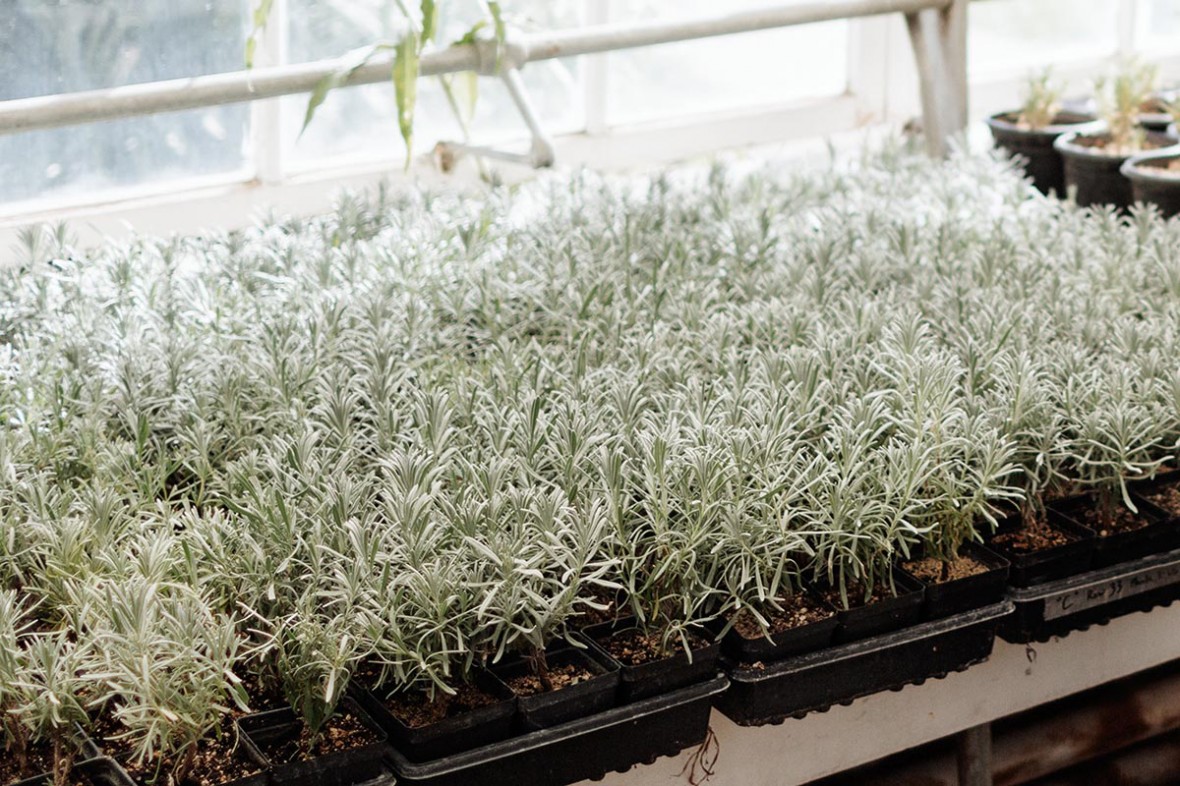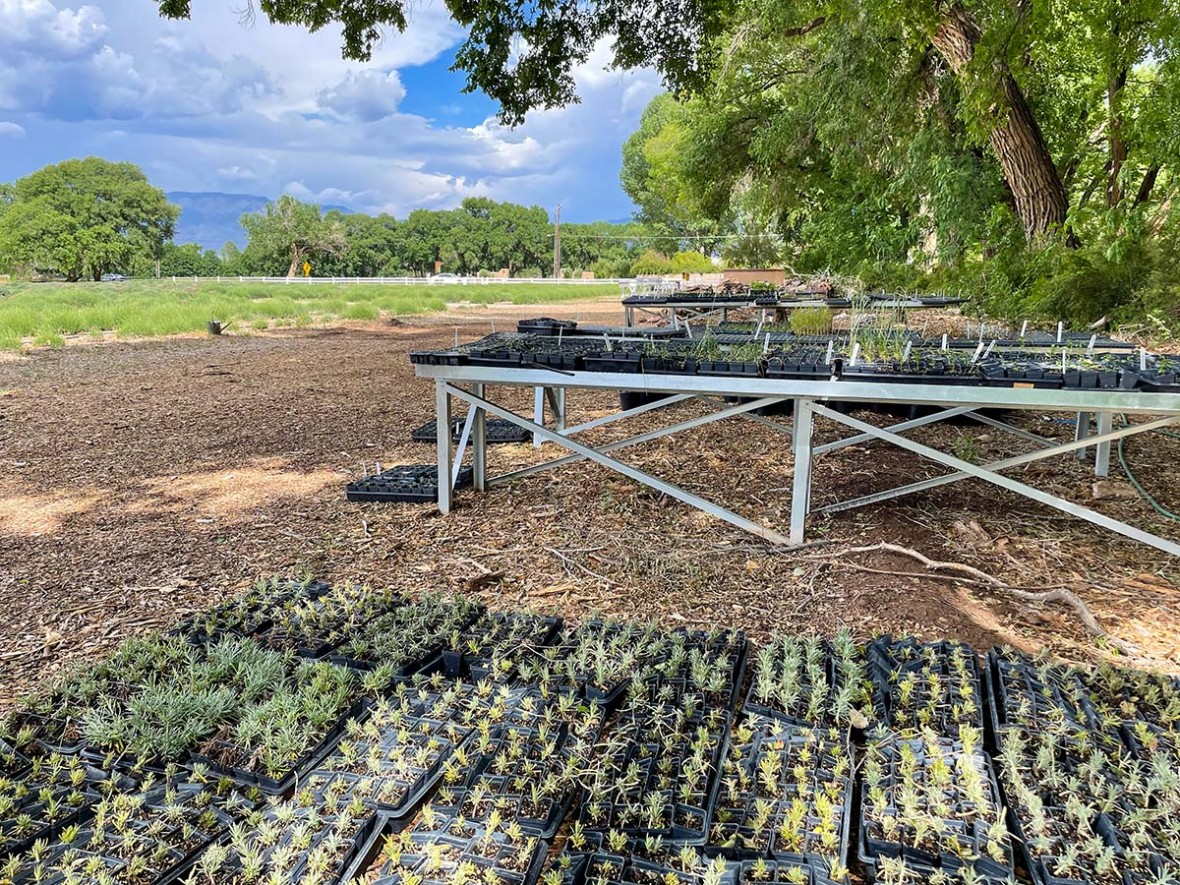
Winter is the season for propagating lavender in our historic 1934 Lord & Burnham greenhouse. A naturally occurring hybrid, our Grosso lavender is a cross between English and Portuguese varieties. These plants are also known as lavandins, prized for their essential oil yields. Grosso is sterile, meaning it does not produce viable seeds, so the only way to propagate Grosso is by taking cuttings.
Each season, our dedicated farmers scour the fields to find healthy, mature plants in the field to propagate. The plants are moved to the greenhouse, where sharp shears are used to cut the healthiest tips of lavender into single stems that are approximately three to four inches long. The leaves are clipped from the bottom of the stem, leaving a half inch of the stem exposed. Then, the exposed stem is lightly scraped to reveal the tissue beneath.
The next step in lavender propagation is to make a tea from organic honey and warm water. Honey is known for its antimicrobial (antibacterial, anti fungal, antiviral and antimycobacterial) properties. The scraped end of the lavender sprig is dipped into the honey tea. This helps assure a disease resistant surface, while also helping to adhere the Organic E-Z Rooting Hormone that the sprig is dipped into next.
After the cutting is dipped into the rooting hormone powder, it is inserted into a tray of sterile organic seedling mix. Each tray holds 128 cuttings. The trays are placed on heating mats on tables in the greenhouse, hovering around 70º to help initiate the rooting process. The cuttings are carefully monitored and lightly watered to keep the soil slightly damp. The farmers check the cuttings for root development, which can take several weeks to initiate.
A gentle tug determines if there is root activity holding the cutting in the soil. When the starts have developed a good root system, they are gradually moved into larger and larger containers over time. Cuttings that have begun the rooting process in late fall are transitioned up to four times over the winter - from seedling tray to two-inch pot, then to four-inch pot and finally to a one-gallon pot, where they will continue to root out over the winter into spring.

In late spring, the rooted plants are taken from the greenhouse to the edge of the lavender fields where they are placed on tables or on the ground in the shade of large cottonwood trees. Here they go through a hardening off period. This is a time for the plants to adjust from the warm, cozy environment of the greenhouse to the conditions in the field. The tree's shade shields them from the strength of the sun as they acclimate to the outdoors. By late May and into the summer, the now well-rooted plants are ready to be planted into our rows of lavender. It will take three to four years for them to become productive for harvesting, and this labor of love is a seasonal ritual that traces the ebb and flow of life on the farm.
Lavender is infused into countless experiences at Los Poblanos, from restorative spa treatments and artisan lavender products to botanically infused cocktails and farm tours. Learn more about lavender and our well-being model by exploring our website.
Artisan Lavender Products
Our artisan lavender products are proudly made in New Mexico, with essential oil from the certified organic Grosso lavender plants that are so lovingly tended. Below are a few best selling products from our collection. Visit the Farm Shop on property or online to shop the full line.

